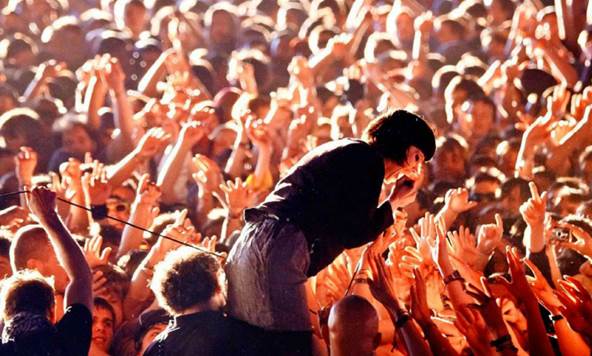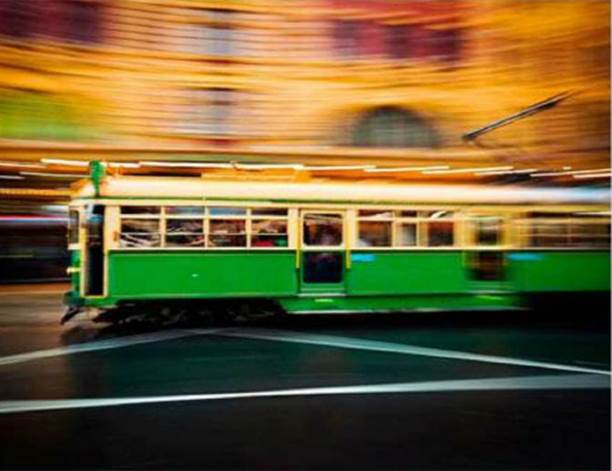Photograph the drama of a live gig for
images that sing!
Music photographer Danny Payne has taken
pictures of even/ modern- day super rock star you could possibly think of. This
shot is of Alice Glass, the singer of Canadian electro-band Crystal Castles.

The
photographer uses a telephoto lens to capture Crystal Castles’ singer Alice
Glass.
"The image was taken on my Canon EOS
40D using a 70-200mm f/2.8 zoom lens," he says. "Most music venues
are dark, so investing in a fast [wide aperture] lens is a good idea." As
Danny was able to open up the aperture to f/2.8, he could use the ambient light
to capture the scene. "You have to be fast when it comes to this type of
photography," he advises. "Thankfully, we'd had a tip off that Alice
was going to head down to the crowd fairly early in the set, so I came armed
with a telephoto lens."
To get a shot like this you may need to
push the ISO to a higher setting then you'd usually use. This ensures you keep
the shutter speed fast enough for sharp shots. This image was shot at f/2.8
with an ISO of 800 and a shutter speed of 1/160 sec. "The wide aperture
setting means Alice is in focus and the crowd behind blurs nicely out to the
back of the frame."
Get
started today...
Be prepared. Pack a fast lens - the wider
the aperture number can go the better. Depending on the size of the concert a
zoom lens may also be essential for decent close-ups.
Microphone stands can be a magnet for the
autofocus on your lens, so select your focus point manually and ensure you're
focused on the subject you actually want to appear sharp.
Contact the venue in advance to check that
they allow photography. You may need a photo pass to shoot from the crowd with
an SLR.
8. Perfect your panning
Follow moving subjects to guarantee dynamic
shots
To get a shot like William Watt's you'll
need to use a photographic technique called panning. To do this you need to pan
the camera with the moving part of an image in hope that you'll keep the moving
part in focus and the background will blur.

Perfect
your panning technique and you could capture action-packed city shots like this
"Panning shots can be a bit hit or
miss, but once you develop a smooth rotation technique it's possible to achieve
fairly consistent results," William says. "To get an even exposure,
you'll need to use your camera in Manual mode and start with a shutter speed of
around 1/60 sec. You can then tweak this setting until you get the correct
exposure."
Get
started today...
Find a busy area where there are lots of
moving vehicles driving by.
To get a smooth effect, select your
camera's autofocus mode, lock the focus onto the moving subject, then press the
shutter and follow the movement of the vehicle. Use your hips to turn in the
direction of travel and continue panning once the shutter has closed.
9. Get liquid refreshment
Get in close and freeze the motion for water
shots with a twist.
When photographer Rob Dweck approached this
scene, he was unsure how to capture it at its best. "The waterfall is 410
feet high and I found it difficult to get a pleasing composition that
encompassed the entire scene and conveyed the power of the rushing water,"
he says.

Get
in close and freeze the motion for water shots with a twist.
"I arrived at the location in harsh
midday light on a clear day, so not ideal circumstances. As I was watching the
water tumble down, began to notice the abstract shapes and patterns that formed
and realised there were interesting photos to be captured by getting closer to
the water. Using my 100-400mm lens, zoomed in so only small portions of the
water were in the frame and I used a fast shutter speed to freeze the
motion."
Once you've got your camera set up, Rob
says you should work the subject and location. "Don'tjust plant yourself
in one place and shoot from that spot. Move all around and shoot from low and
high angles. Get closer to the subject so that any distracting elements aren't
included in the frame. Compose your shots with the camera off the tripod so you
can move around more easily and see what works. You can then mount the camera
back on the tripod once you're in position."
Get
started today...
To capture this type of shot, you'll need
to pack a telephoto zoom lens. Something like a 100-400mm works best.
Shoot using a fast shutter speed to freeze
the movement of the water - you should try a setting of abovel/1000 sec.
Pack a lens cloth, because you may need to
keep cleaning spray from the water off the front element of your lens.